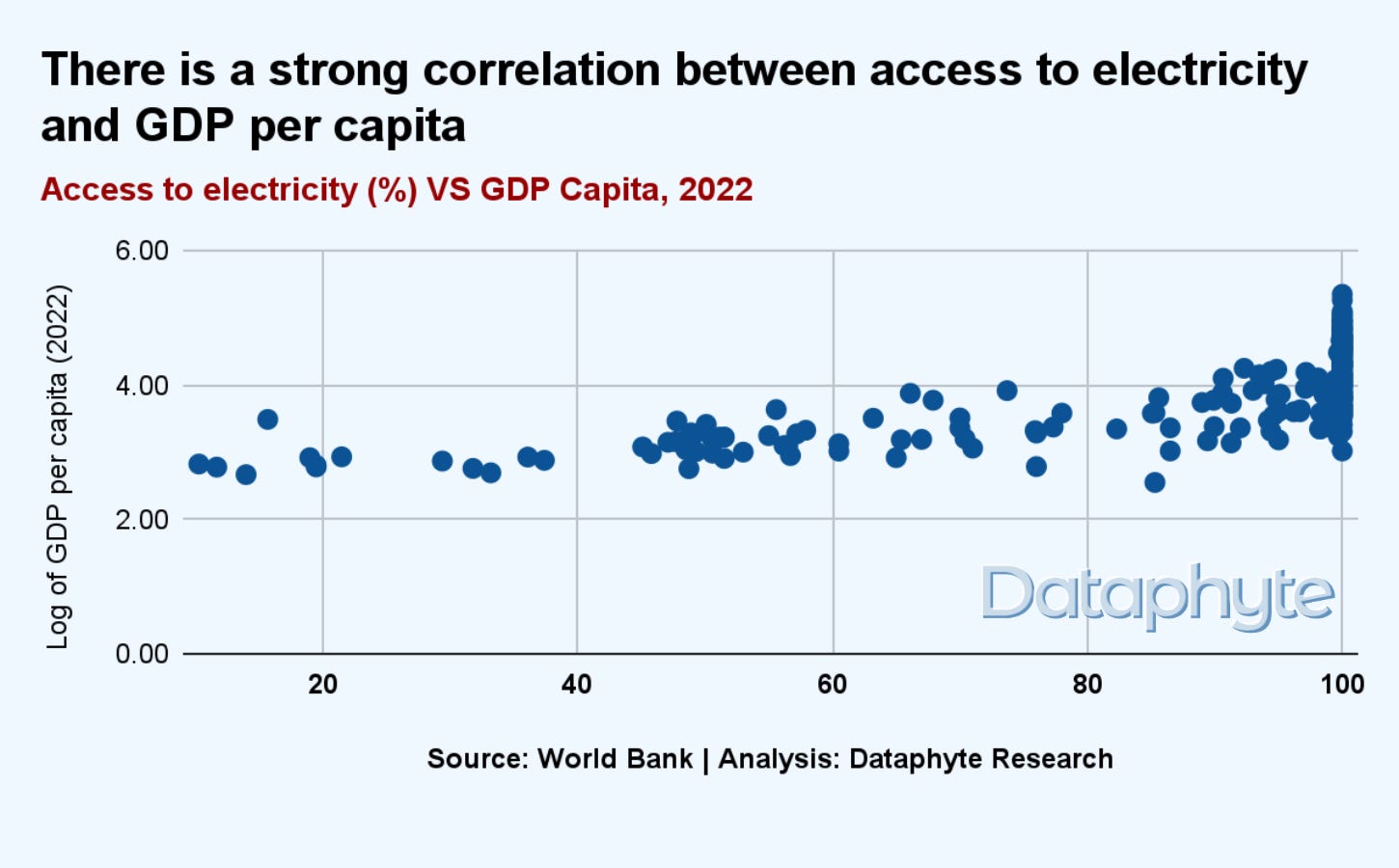At present, Nigeria’s President Bola Ahmed Tinubu is in Dar Es Salaam, Tanzania, to attend the African Energy Summit. He will also endorse the Dar Es Salam energy declaration. The African Energy Summit will focus on expanding electricity access to 300 million people in Africa and improving the continent’s energy sector by 2030. Along with many African leaders, Tinubu will climb the stage to share Nigeria’s plan towards achieving universal access to energy.
Most production and consumption activities in the country rely on energy. Currently, power generation in Nigeria stands between 4,000 and 5,400 Megawatts for a population of over 200 million. This number reflects the shortage of people with access to energy, according to Nigeria's Federal Ministry of Power in 2024. The ministry also noted that more than 175 million Nigerians lack access to clean cooking, with far-reaching implications for the economy.
Supplying energy such as electricity to people living in both rural and urban areas in the Nigerian community remains an unresolved puzzle by the government. Per the United Nations estimation, Nigeria has the largest number of people globally without access to electricity. This access deficit robs of Nigeria’s financial strength, capacity to be productive, and run businesses in a most profitable way.
According to the World Bank’s data, Nigeria’s access to electricity expanded by only 26% over more than a decade, which is slow progress compared to several initiatives and investments into the power sector.
The cost of energy poverty
Since power is not readily available, Nigerians have to self-generate electricity for household and industrial use at an astronomical cost. Only last week, the commissioner for energy in Lagos State, Biodun Ogunleye, revealed that 6 million households in Lagos burn 9 billion liters of fuel to generate 10GW annually.
Also, offices and small businesses in the state consume 6.6 billion liters of fuel, while generators in markets consume 61 million liters of fuel. At an average cost of ₦1000 per liter, this adds up to an expenditure of nearly ₦16 trillion annually in Lagos alone. For context, this is about one-third of the proposed 2025 federal budget.
We also have an indication about what the national expenditure on self-generation looks like. In July 2024, the Minister of Power, Bayo Adelabu told the National Oil and Gas conference that Nigerians spent ₦16 trillion fueling and servicing their generators in 2023. Given that fuel prices at the time were about half of what they are today, then the national figure for self-generation right now could easily be north of ₦30 trillion.
Such high levels of expenditure take away from spending in other sectors. Constant generator use also exposes Nigerians to the potential for inhaling harmful carbon monoxide, and heightens the risk of domestic accidents.
Where does Nigeria’s grid electricity come from?
Nigeria’s grid electricity is generated from two sources: Gas and hydroelectric power. Other sources have been explored to generate energy in Nigeria, but only natural gas and hydroelectric have been mainly explored. An estimated 80% and 20% of Nigeria’s grid electricity was generated from natural gas and hydroelectric power respectively. The other sources such as coal, solar, bioenergy, and other fossil fuels are below 1%, according to Statista's 2023 data.
Hydroelectric power is a renewable energy source which uses the power of moving water to produce electricity. In Nigeria, Kanji and Jebba dams are the most significant hydroelectric sources for generating electricity. However, these plants have suffered loss of power generating capacity due to consistent national grid collapses over time. For instance, out of the 28 grids connected to generating plants, only three are performing at an optimal level. Six are operating at an average capacity, while the remaining 19 are in poor condition, according to the Nigerian Electricity Commission.
Energy powers economy prosperity
Because of this frequent experience of blackouts, Nigeria leads in Africa with the largest number of people without access to electricity, keeping Nigerians in poverty as access to electricity is key to improved living standards.
Dataphyte’s analysis of access to electricity and GDP per capita shows a rather close relationship between both. In other words, access to energy powers economic prosperity. Similarly, the Gray Group International reported in November 2024 that lack of access to energy or electricity has social, economic, and environmental implications.
Looking toward the sun
As fuel prices go up, more and more Nigerians are exploring alternative sources to generate electricity, such as solar energy. Over the last few years, the cost of solar energy has declined by 90% in the last decade, leading to a boom in solar energy adoption in the world.
Seeing that less than 1% of grid electricity was generated through solar, it is time Nigerians directly invested in solar that will reduce costs, preferably in groups. This will effectively reduce their expenses. Markets, estates, and shopping malls can also invest in solar-powered systems to reduce operational costs.
Thanks for reading this edition of Pocket Science. It was written by Salako Emmanuel and edited by Joachim MacEbong.
If you've read this far, now take 2 seconds to share:
Invite your friends and earn rewards








